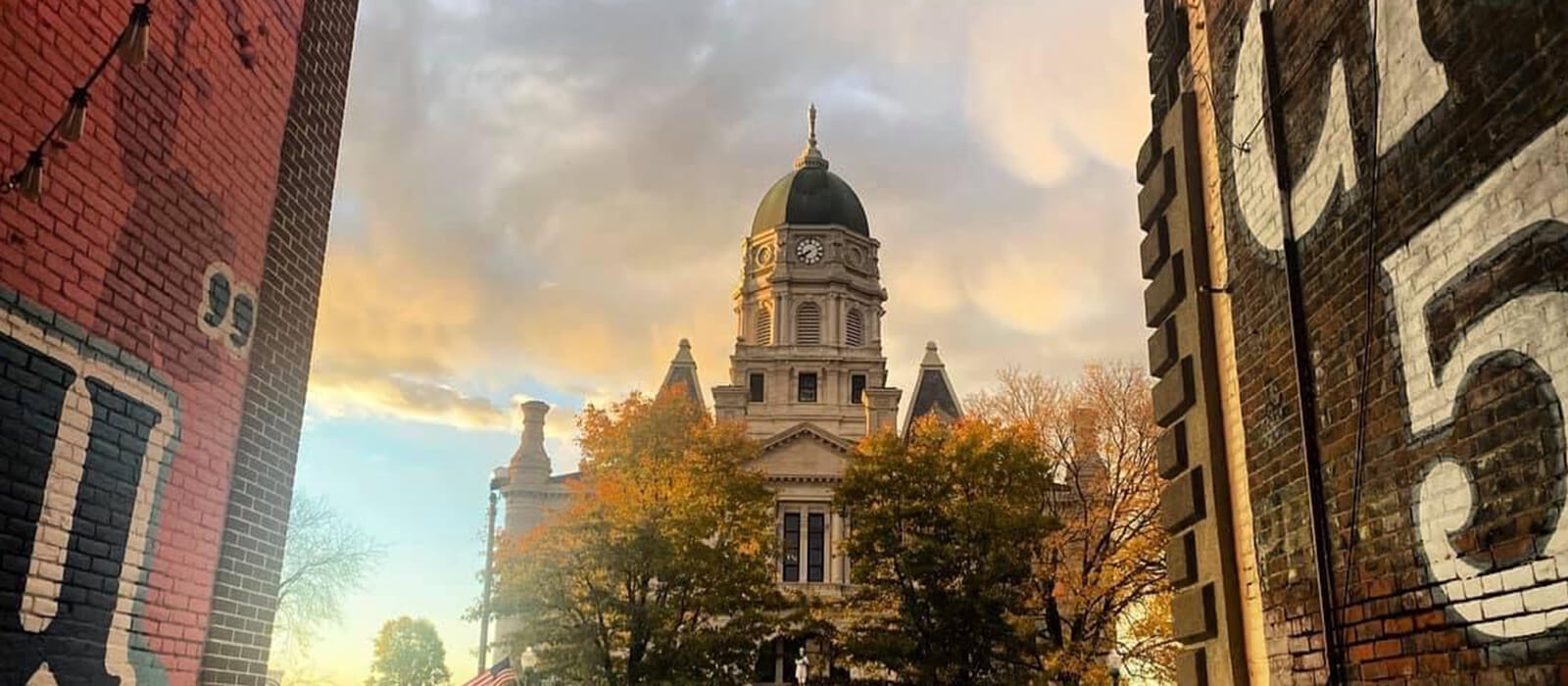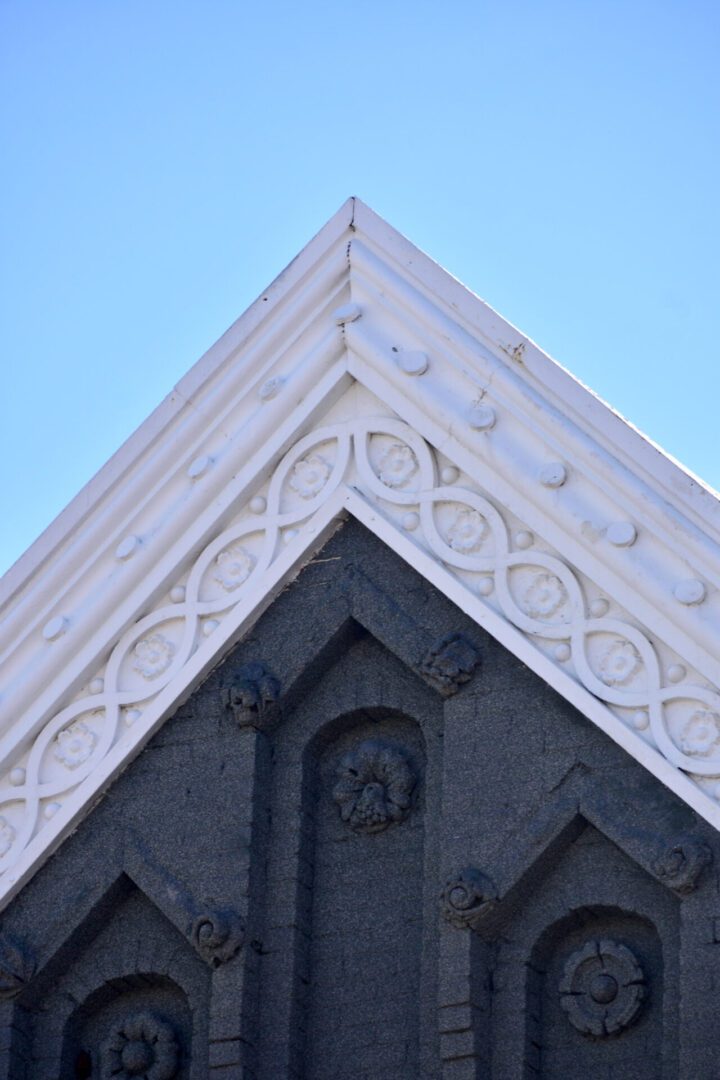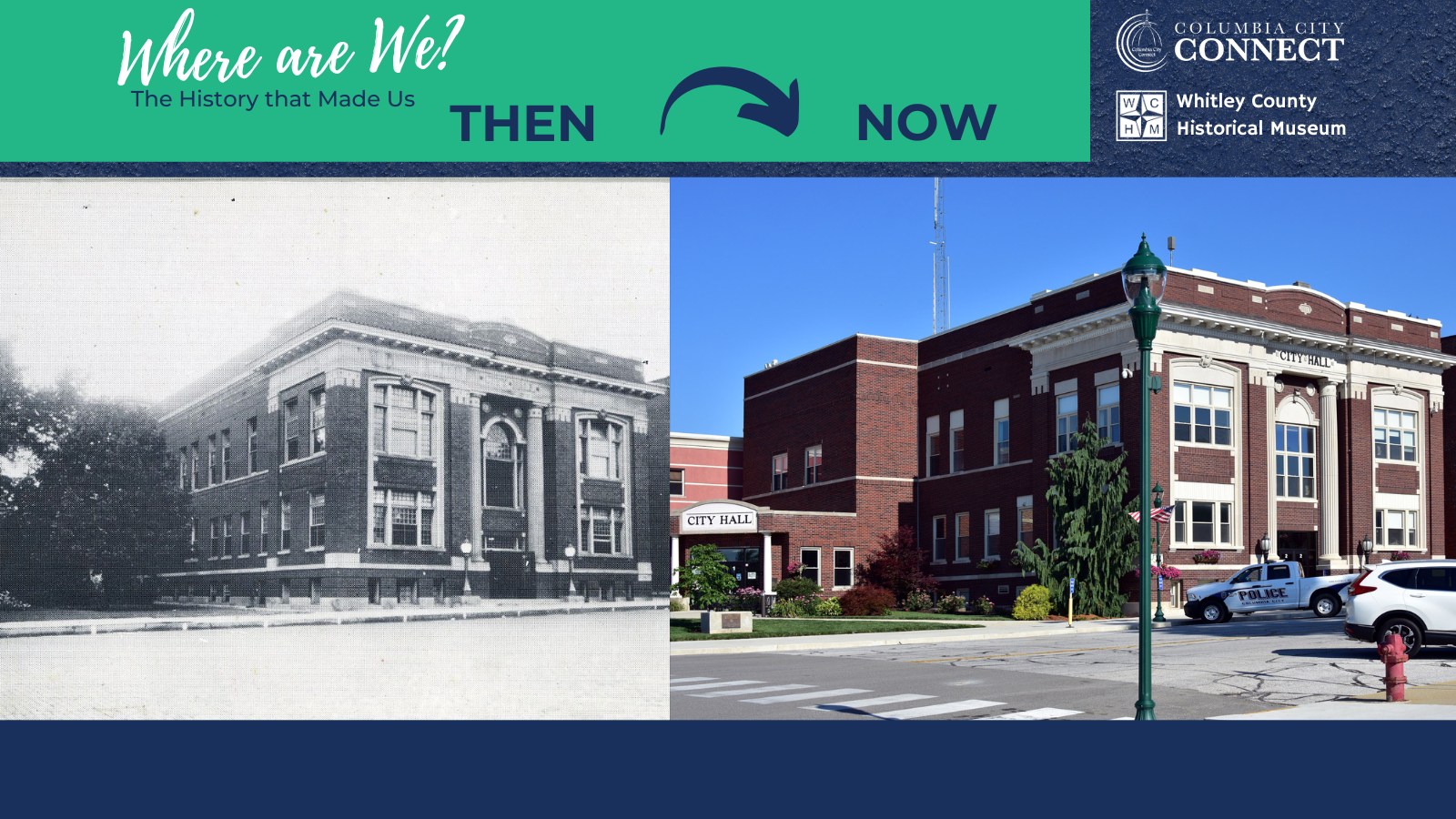
𝐓𝐞𝐚𝐜𝐡𝐞𝐫, 𝐋𝐚𝐰𝐲𝐞𝐫, 𝐌𝐚𝐲𝐨𝐫, 𝐉𝐮𝐝𝐠𝐞: 𝐓𝐡𝐞 𝐑𝐞𝐦𝐚𝐫𝐤𝐚𝐛𝐥𝐞 𝐉𝐨𝐮𝐫𝐧𝐞𝐲 𝐨𝐟 𝐉.𝐖. 𝐀𝐝𝐚𝐢𝐫
Columbia City has been blessed with a long history of active and renowned city leaders.
It was on January 5, 1888 when local newspapers published that the people of Columbia City would be voting to adopt a city form of government. Part of that decision also meant a vote on who would lead the city as its first mayor. It was by popular vote that Joseph W. Adair would be selected.
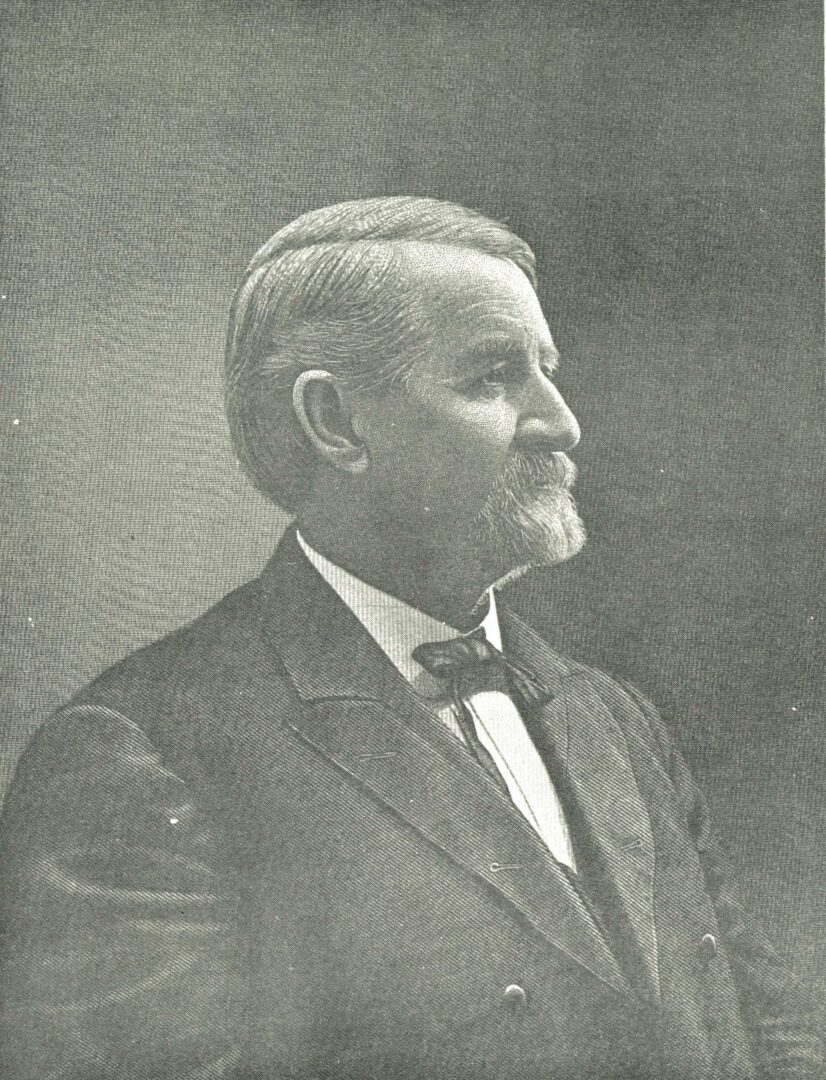
Photo courtesy of the Whitley County Historical Museum
Adair was likely chosen because of how beloved he was by this community. The local history books speak at great length about his education and prominence certainly, but also say by his “consistent Christian life and upright course of conduct, as well as by honorable professional and official career, he has won and retained the warm and abiding friendship of all classes and conditions of people with whom he has been brought in contact” (Kaler & Maring, 1907).
Joseph Wilson Adair was born on November 29, 1843 in Washington Township, Noble County. His parents were some of the earliest settlers of that area. He was one of 11 children and was raised on the family farm. He attended district schools as a young boy, and by the time he was 17 he had become a teacher.
Adair had a thirst for knowledge, and he was an avid student. With this in mind, he entered college in Fort Wayne for one year before continuing his studies at Wabash College in Crawfordsville. Through that time, he also served as a teacher and principal for schools in Larwill and Ligonier.
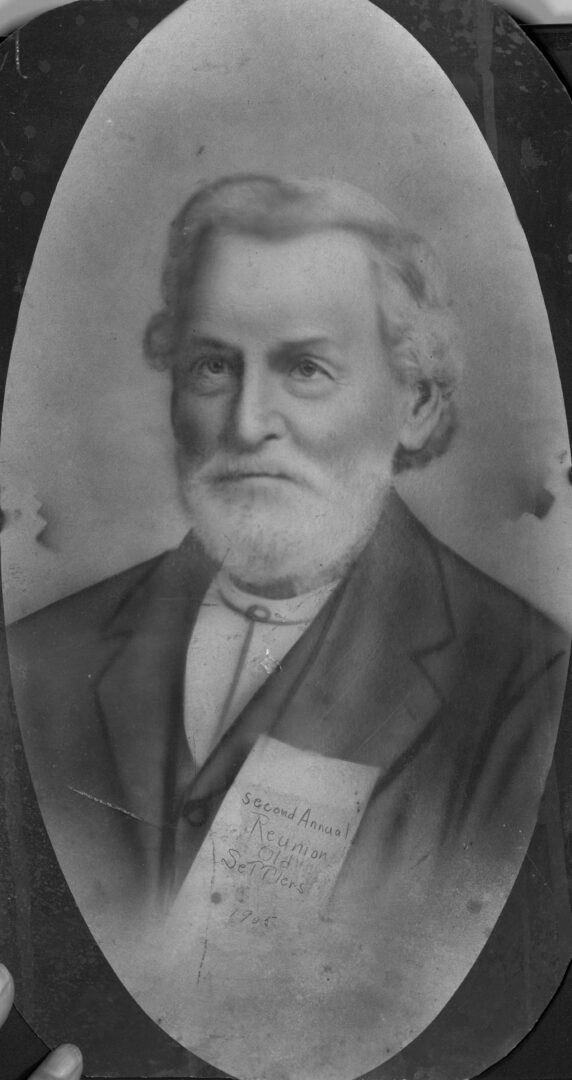
Photo courtesy of the Whitley County Historical Museum
His mind turned to the practice of law, and he took up the study under Judge Henry D. Wilson, who was practicing in Columbia City. Adair would be admitted to the bar in 1870. From 1873 to 1883, he entered a practice with James S. Collins in Columbia City.
As mayor, Adair’s term in office was short, with him only serving for a year. In 1889, he was appointed to the bench as Circuit Court Judge, and he continued to serve in this position for 18 years, retiring from it in 1908.
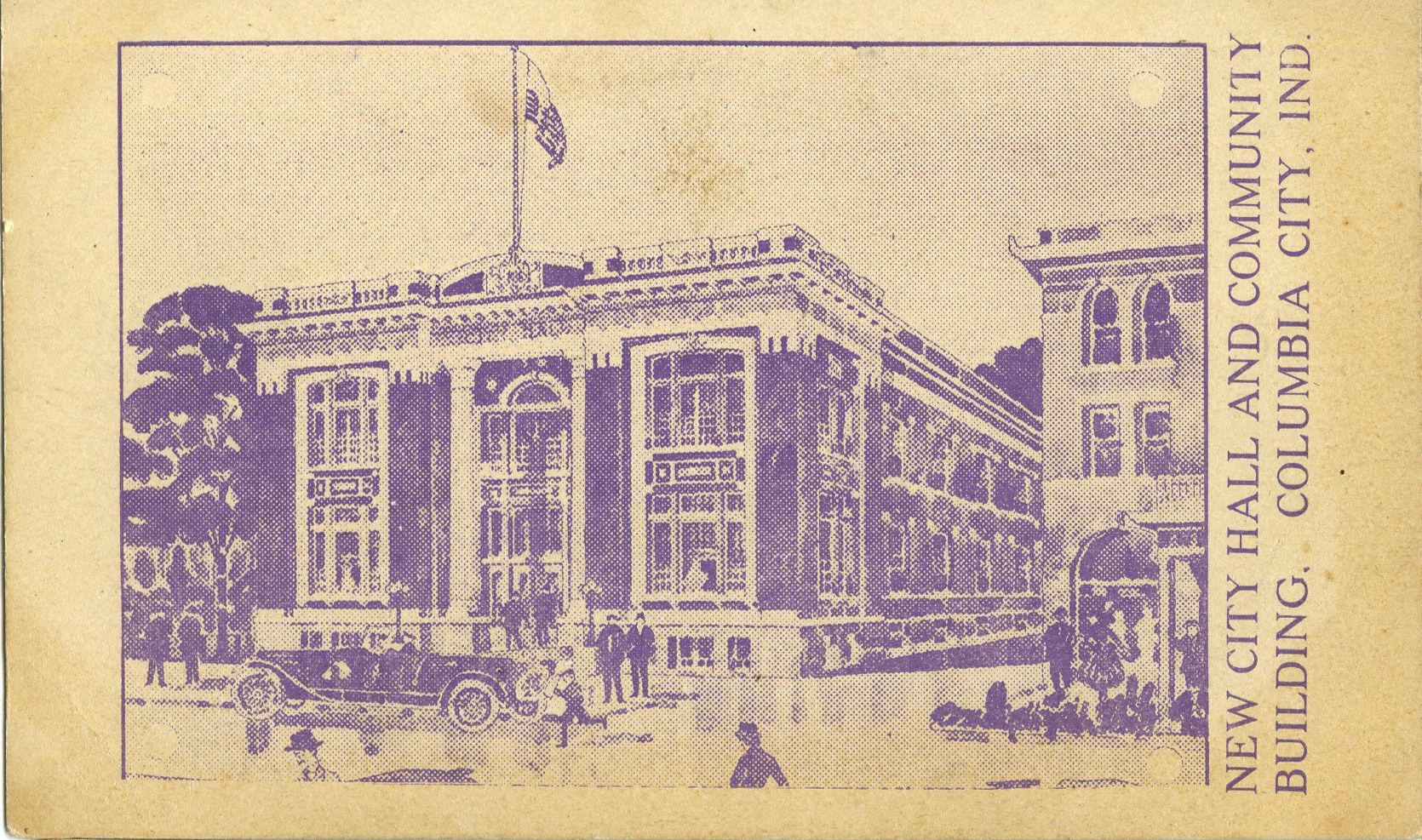
Adair made attempts to go into politics. He ran for Congress, but was defeated for the seat by Cyrus Cline, of Angola. He was also a candidate for Supreme Court Judge, but when the rest of the democratic ticket had lost, so, too, did Adair. He did serve as the Twelfth District delegate at the Democratic National Convention in 1876.
In his personal life, Joseph W. Adair married Amelia Young, of Wolf Lake, on July 27, 1867. They had two daughters – Jessie and Josephine.
Sadly, Joseph Adair suffered from colon cancer. After several months of the condition, he traveled to Fort Wayne to undergo a procedure to remove the tumor. After the surgery, he suffered “uraemic” poisoning and slipped into a coma. He died in April of 1910 at the age of 63.
Thank you to Rachael Hartman for her outstanding research and writing of the article and the @Whitley County Historical Museum for sharing photos from its collection.
𝑾𝒉𝒆𝒓𝒆 𝒂𝒓𝒆 𝑾𝒆: 𝑨𝒓𝒄𝒉𝒊𝒕𝒆𝒄𝒕𝒖𝒓𝒂𝒍 𝑯𝒊𝒔𝒕𝒐𝒓𝒚
This fluted stone column is one of a pair on this downtown building, but there is an architectural cousin down the street!
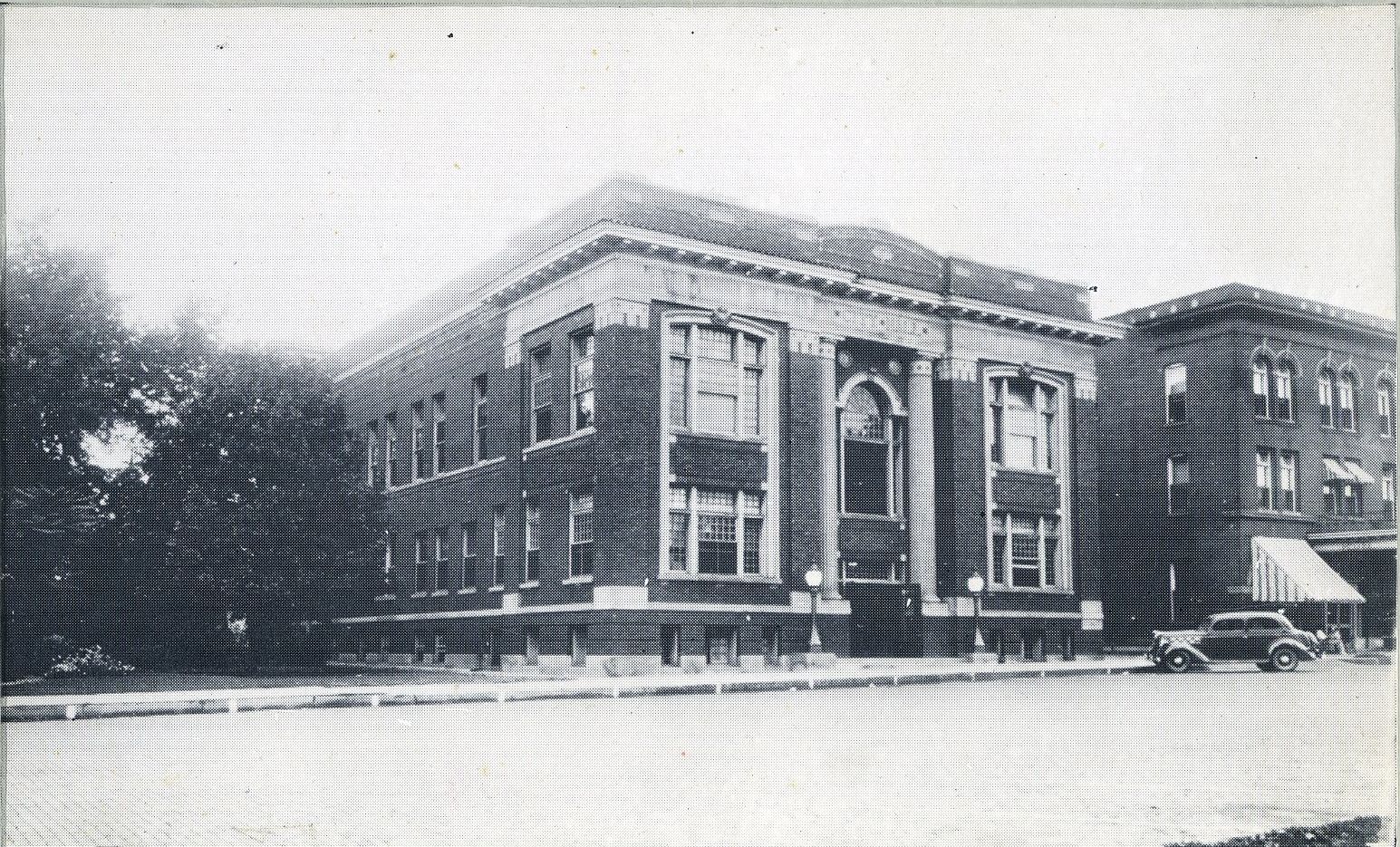
The column is one of two on the front of City Hall at 112 S. Chauncey Street. Constructed in 1917, the building is a mix of Craftsman (the cornice and windows) and Neo-classical (the columns and stonework) architectural styles.
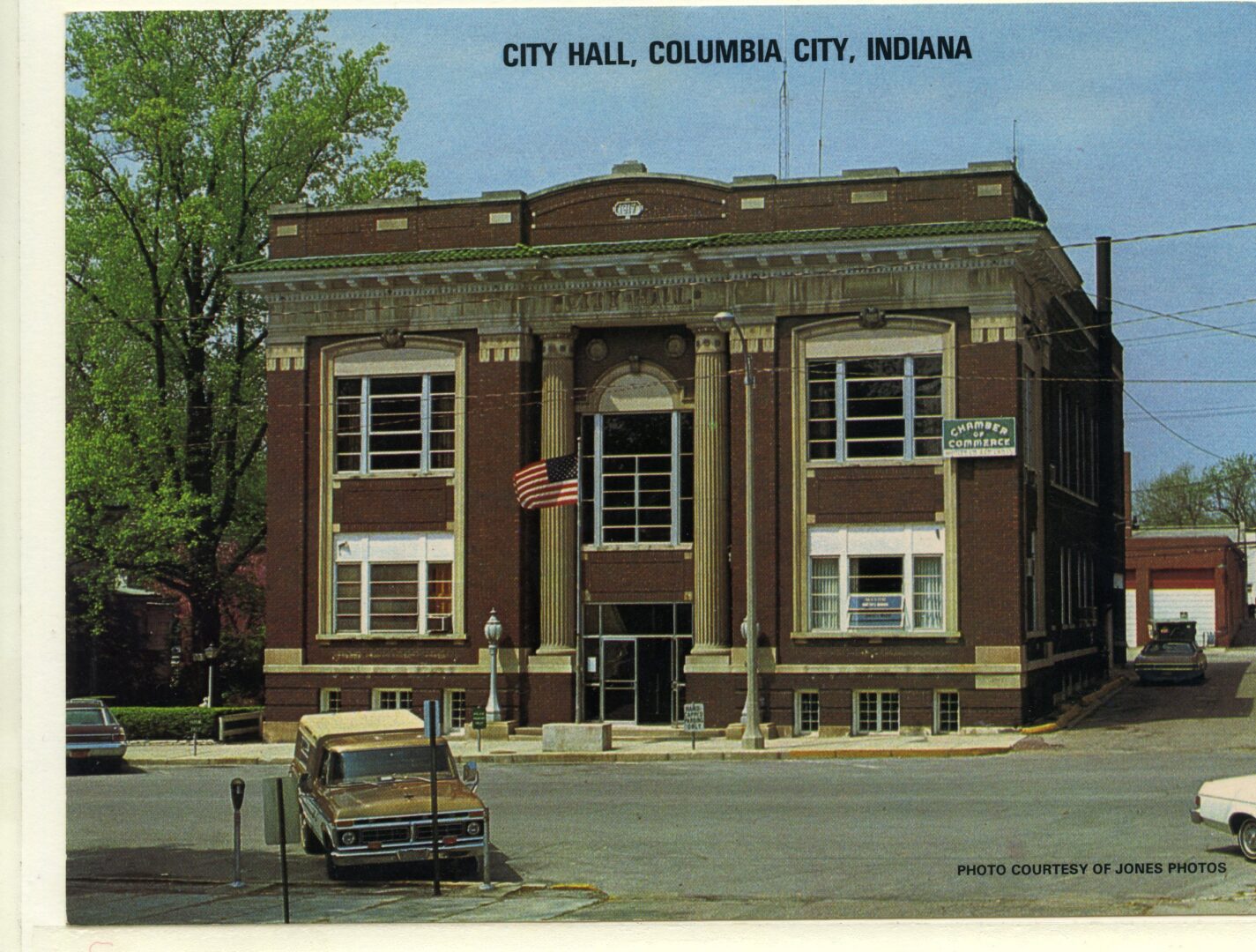
The columns are fluted, meaning that they have vertical grooves/ribs. Besides creating visual interest with shadow play, fluting helps to conceal the horizontal joints between stone blocks or the vertical joints if the columns are wooden. Fluting also makes the column appear more perfectly round than a smooth column by reducing the apparentness of imperfections.
An interesting comparison can be made between City Hall and the Baptist Church building (now the House of Style) on West Van Buren Street that was constructed with a nearly identical architectural style, but which has four smooth columns instead of fluted ones.
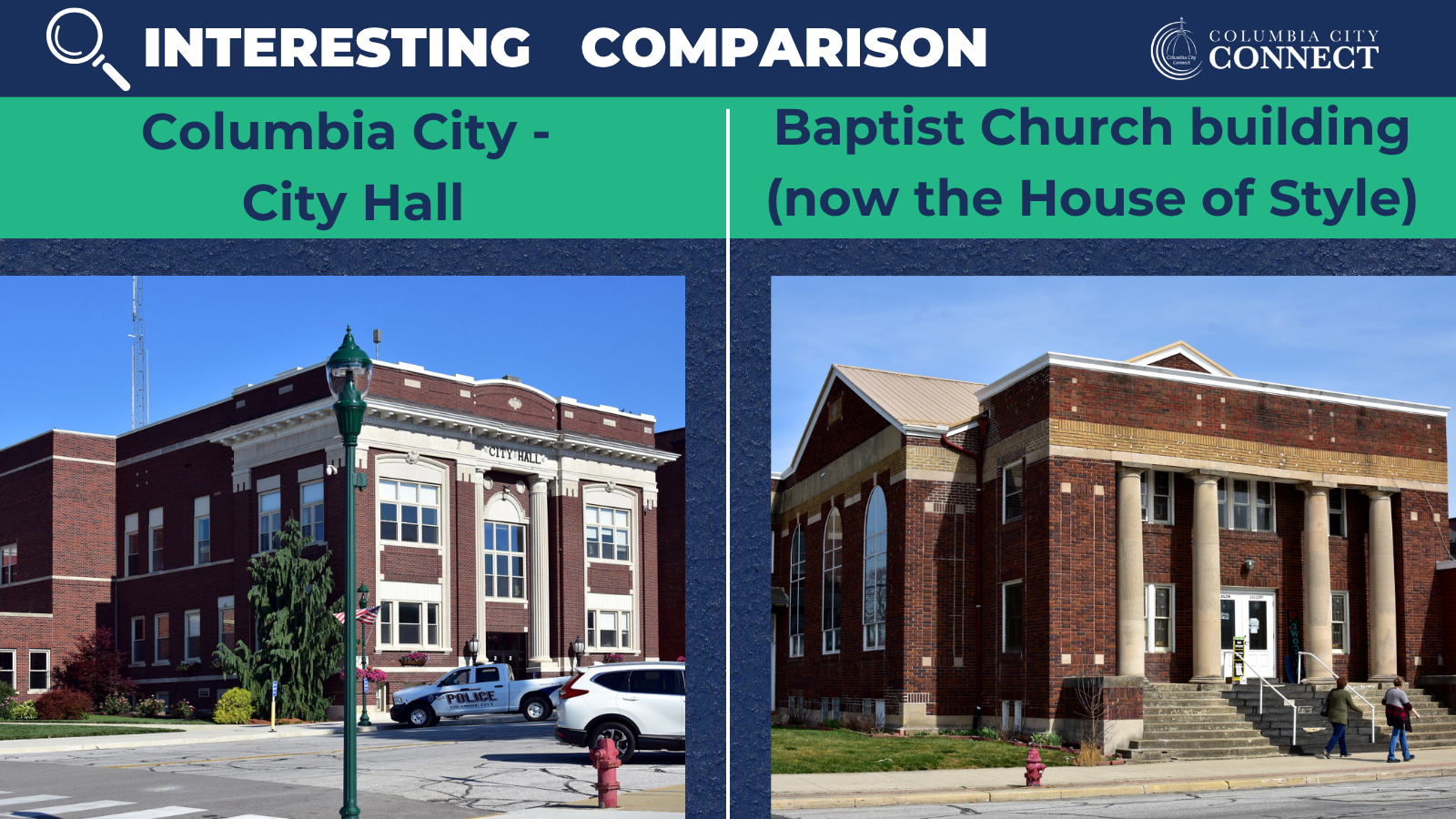
Thank you to Nathan Bilger for providing the recent photos and valuable insights into the architectural history.
For more on The Central Bulding, check out the Windows into History series at the Columbia City Connect’s website: Windows into History Archives – Columbia City Connect
